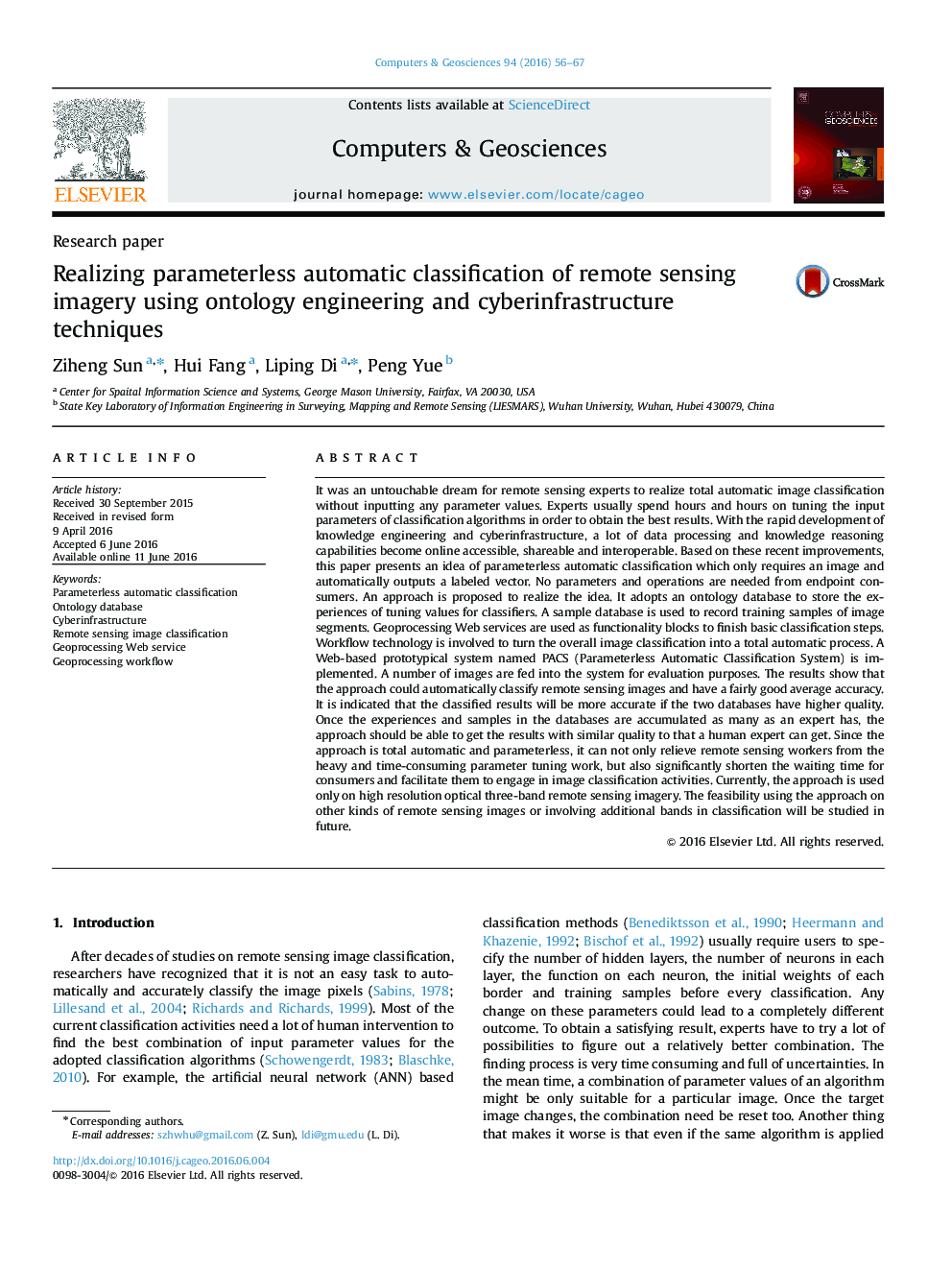| Article ID | Journal | Published Year | Pages | File Type |
|---|---|---|---|---|
| 506995 | Computers & Geosciences | 2016 | 12 Pages |
It was an untouchable dream for remote sensing experts to realize total automatic image classification without inputting any parameter values. Experts usually spend hours and hours on tuning the input parameters of classification algorithms in order to obtain the best results. With the rapid development of knowledge engineering and cyberinfrastructure, a lot of data processing and knowledge reasoning capabilities become online accessible, shareable and interoperable. Based on these recent improvements, this paper presents an idea of parameterless automatic classification which only requires an image and automatically outputs a labeled vector. No parameters and operations are needed from endpoint consumers. An approach is proposed to realize the idea. It adopts an ontology database to store the experiences of tuning values for classifiers. A sample database is used to record training samples of image segments. Geoprocessing Web services are used as functionality blocks to finish basic classification steps. Workflow technology is involved to turn the overall image classification into a total automatic process. A Web-based prototypical system named PACS (Parameterless Automatic Classification System) is implemented. A number of images are fed into the system for evaluation purposes. The results show that the approach could automatically classify remote sensing images and have a fairly good average accuracy. It is indicated that the classified results will be more accurate if the two databases have higher quality. Once the experiences and samples in the databases are accumulated as many as an expert has, the approach should be able to get the results with similar quality to that a human expert can get. Since the approach is total automatic and parameterless, it can not only relieve remote sensing workers from the heavy and time-consuming parameter tuning work, but also significantly shorten the waiting time for consumers and facilitate them to engage in image classification activities. Currently, the approach is used only on high resolution optical three-band remote sensing imagery. The feasibility using the approach on other kinds of remote sensing images or involving additional bands in classification will be studied in future.
